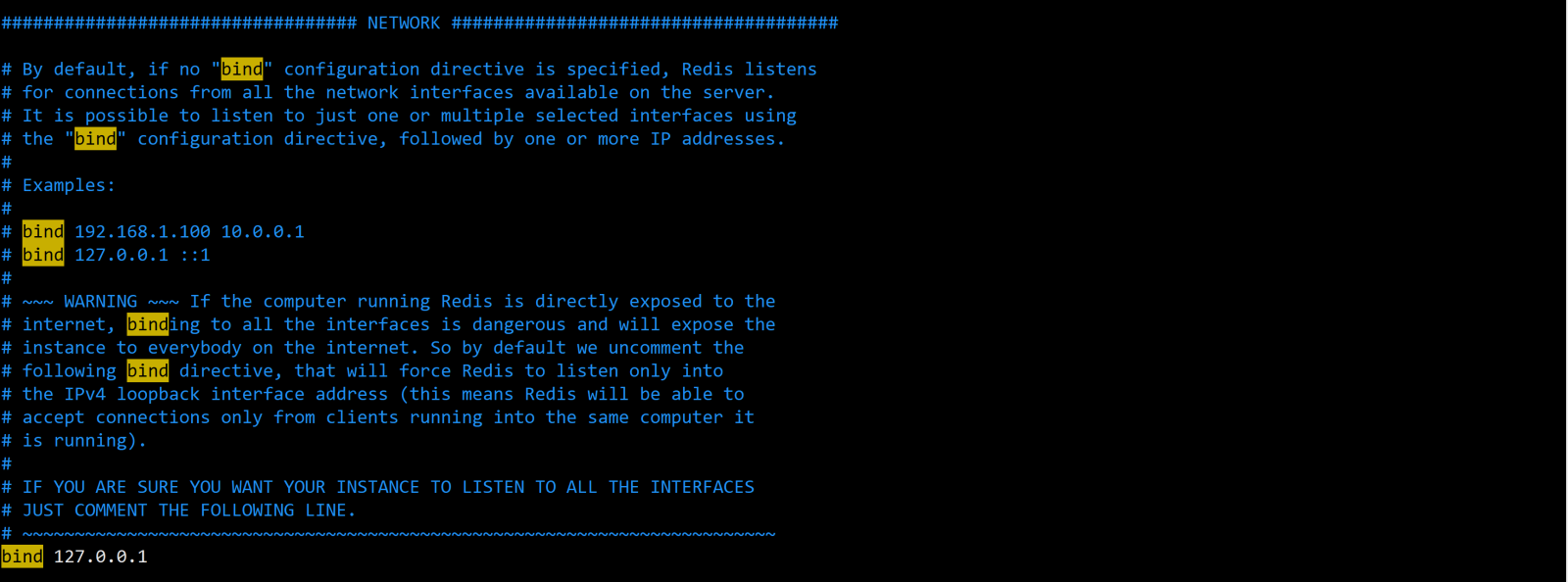1. Upload the Redis package and use the tar -zxvf command to decompress it
2. In the decompressed package, execute the make command to compile

3. Execute the make install command; make install PREFIX=/usr/local/redis (there is no configure file after Redis is decompressed, you can specify the installation directory in this step; the premise is to add the folder mkdir /usr/local/redis first)

4. Modify the configuration
>1. Copy the configuration file: In the installation directory, see the conf folder in the directory at the same level as bin, and use the cp command to unzip it. Copy the redis.conf file in the Redis directory to the newly created conf directory

>2. Modify the redis,conf file
a. Port:
Default port: 6379

b.timeout:
How long to close the connection after the client is idle; if specified as 0 , indicating that the function is turned off, that is, the connection is not closed

c. Background startup:
The default is not background startup: daemonize no
Yes Modify to background startup (after entering the startup command, you can continue to operate in the current command window, otherwise it will be blocked, that is, the terminal is occupied, and you can only open a new window to continue the operation), that is, configure it as a daemon process: daemonize yes

d. Snapshot name:
The default is dump.rdb. It is recommended to name prod.rdb with the port number. It is easy to distinguish when there are multiple instances: dbfilename dump.rdb

The default is appendonly.aof. It is recommended to name prod.aof with the port number. It is easy to distinguish when there are multiple instances: appendfilename "appendonly.aof"

e. Snapshot file storage path:
The default is dir ./; that is, the directory where redis is started; specify the directory location of the rdb/AOF file, which can only be a folder and not a file

f. Maximum number of connections:
The default is 10000; the 10000 below is commented, but the default is also 10000

g. Maximum memory usage:
The default is commented # maxmemory

h.bind:
can bind the ip that allows access (bind is bound to the local redis and can accept access IP), as follows:
# bind 192.168.1.100 10.0.0.1
# bind 127.0.0.1 ::1
If you want to allow all hosts to access (local and remote (if it is cloud Server, configure the intranet IP)), comment all bind
Default: bind 127.0.0.1, indicating that only the local machine is allowed to access

i. Protection Mode:
The default is on: protected-mode yes
Close protected-mode mode, external network can directly access
To enable protected-mode mode, bind IP needs to be configured Or set an access password; if you do not bind the IP and set the password, you can only access it locally, and no other IP access is allowed

j. Set the redis password:
Default is: # requirepass foobared, can be changed to 123456


Start using the specified configuration file: ./redis-server ../conf/6379.conf &


6. Log in:
Connect to the client./redis-cli, the default port number does not need to be specified, -p port, -h host
After entering the client: command: auth 123456 (you set Password)

7. Add environment variables:
vim /etc/profile
# redis
export REDIS_HOME=/ usr/local/redis
export PATH=$REDIS_HOME/bin:$PATH
source /etc/profile
The above is the detailed content of How to build and install Redis in centOS7 environment. For more information, please follow other related articles on the PHP Chinese website!




